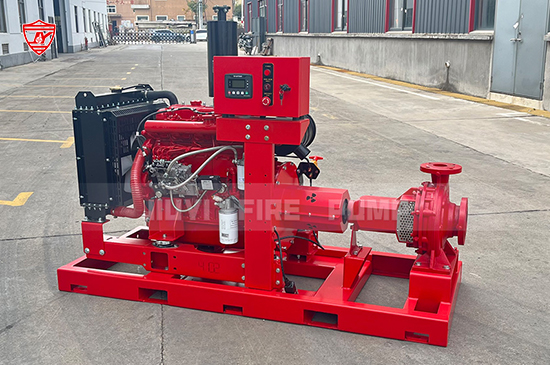In today’s world, energy efficiency isn’t just a cost-saving strategy — it's a responsibility. While fire pumps are critical to life safety systems, they are also major energy consumers. By optimizing fire pump operation, building owners and facility managers can significantly reduce energy usage without compromising performance or NFPA 20 compliance.
As a fire pump manufacturer, we understand both the technical and operational aspects of these systems. In this article, we’ll explore the best practices and technologies that can help optimize fire pump performance for better energy efficiency.

Fire pumps are designed to deliver high flow rates under pressure in emergency situations. However, poor system design, improper pump selection, or a lack of maintenance can lead to energy inefficiencies.
Some common reasons for excess energy use include:
Oversized pumps
Continuous or unnecessary operation
High friction losses in piping
Poorly maintained components
Understanding where energy is being wasted is the first step toward optimization.
Pump sizing plays a crucial role in energy usage. Oversized pumps not only waste energy but may also cause system instability or premature wear.
Optimization Tip:
Match the pump capacity closely to the required duty point based on hydraulic calculations.
Use vertical turbine or split-case pumps only when justified by demand and head requirements.
Consider a system analysis during the design phase to avoid oversizing.
Although VFDs are not typically used for main fire pumps due to strict NFPA 20 regulations, they can be beneficial in specific fire pump applications or auxiliary systems.
Where they are permitted:
Jockey pumps: VFDs reduce energy consumption during pressure maintenance.
Test and training setups: VFDs allow control of pump speed during non-emergency use, reducing energy waste.
The jockey pump’s role in maintaining system pressure is critical. An improperly sized or constantly running jockey pump can waste a significant amount of energy.
Optimization Strategies:
Ensure the jockey pump is correctly sized to maintain pressure without cycling excessively.
Use VFDs or pressure-sensing controls to adjust operation based on system needs.
Poor maintenance leads to reduced efficiency, higher energy consumption, and increased risk of failure. Regular inspections help catch issues like:
Bearing wear
Clogged strainers
Impeller damage
Misaligned shafts
Recommended Maintenance Plan:
Weekly run tests
Monthly inspection of pump alignment and vibration
Annual flow tests to ensure performance meets original design
Piping system layout directly affects the total dynamic head (TDH) the fire pump must overcome. High TDH = more power consumed.
Optimization Techniques:
Use smooth-radius elbows instead of sharp ones.
Limit the number of fittings, turns, and valves.
Use adequately sized piping to reduce friction losses.
Monitoring systems provide insight into pressure fluctuations, pump cycles, and energy consumption.
Benefits:
Helps identify unnecessary pump operation
Detects leaks or valve failures
Allows for data-driven maintenance and upgrades
Digital control panels with remote monitoring capabilities can alert operators to inefficiencies in real time.
Fire pump testing is essential, but inefficient test procedures can waste water and energy.
Energy-Saving Solutions:
Reuse test water using a closed-loop system
Schedule tests during off-peak hours to reduce demand charges
Use test meters and flow measurement tools for accuracy and efficiency
If your fire pump system is over 10-15 years old, it may be time to consider an upgrade. Newer models are designed with:
More efficient impeller geometry
Tighter tolerances
Lower power consumption
Consider Replacing If:
Your pump frequently fails flow tests
Energy costs are steadily increasing
The pump is showing signs of major wear or corrosion
Even the most efficient system can become wasteful in untrained hands. Building staff must understand how and when the system operates.
Provide Training On:
When to initiate manual pump starts
How to check for common inefficiencies
Emergency procedures without unnecessary activation
Energy efficiency and fire safety do not need to be at odds. Through strategic pump selection, intelligent system design, proper maintenance, and staff training, facility managers can optimize fire pump operation for maximum energy savings.
At Better Technology Group, we’re committed to building fire pump systems that not only protect lives but also reduce your operational costs. Whether you’re planning a new installation or upgrading an existing system, our engineers can guide you to the most efficient solution.